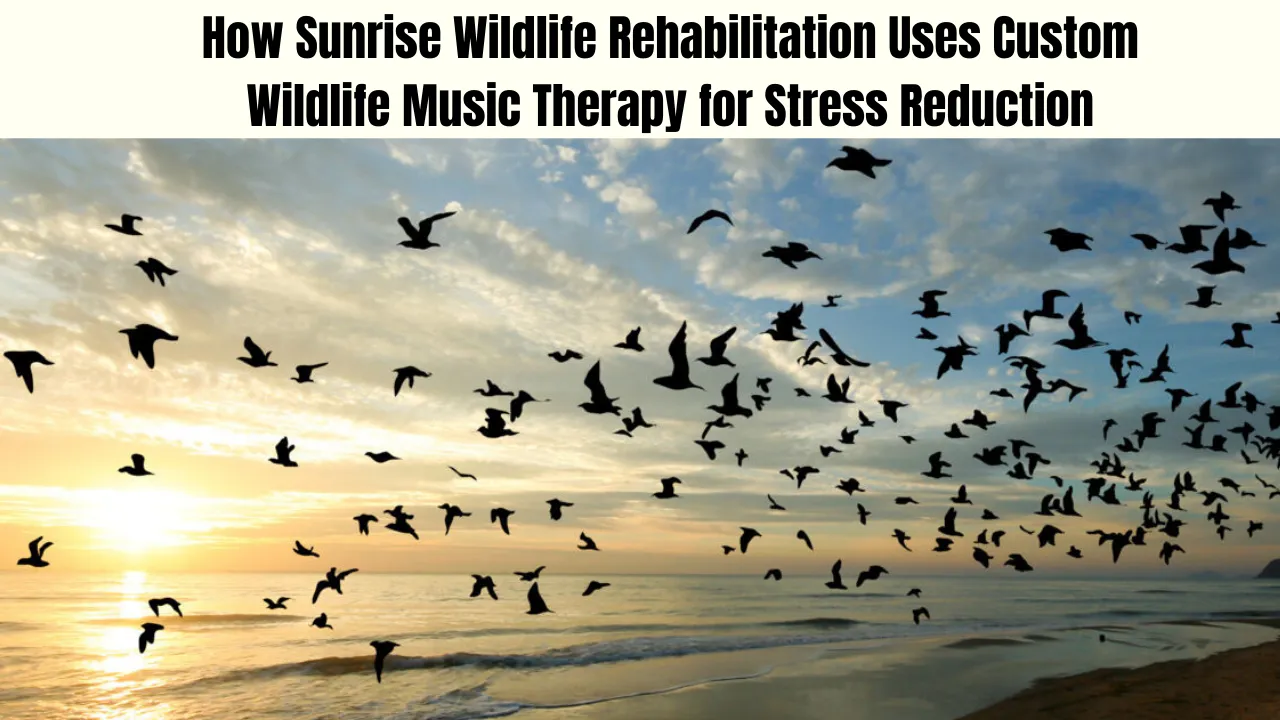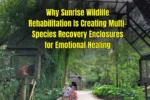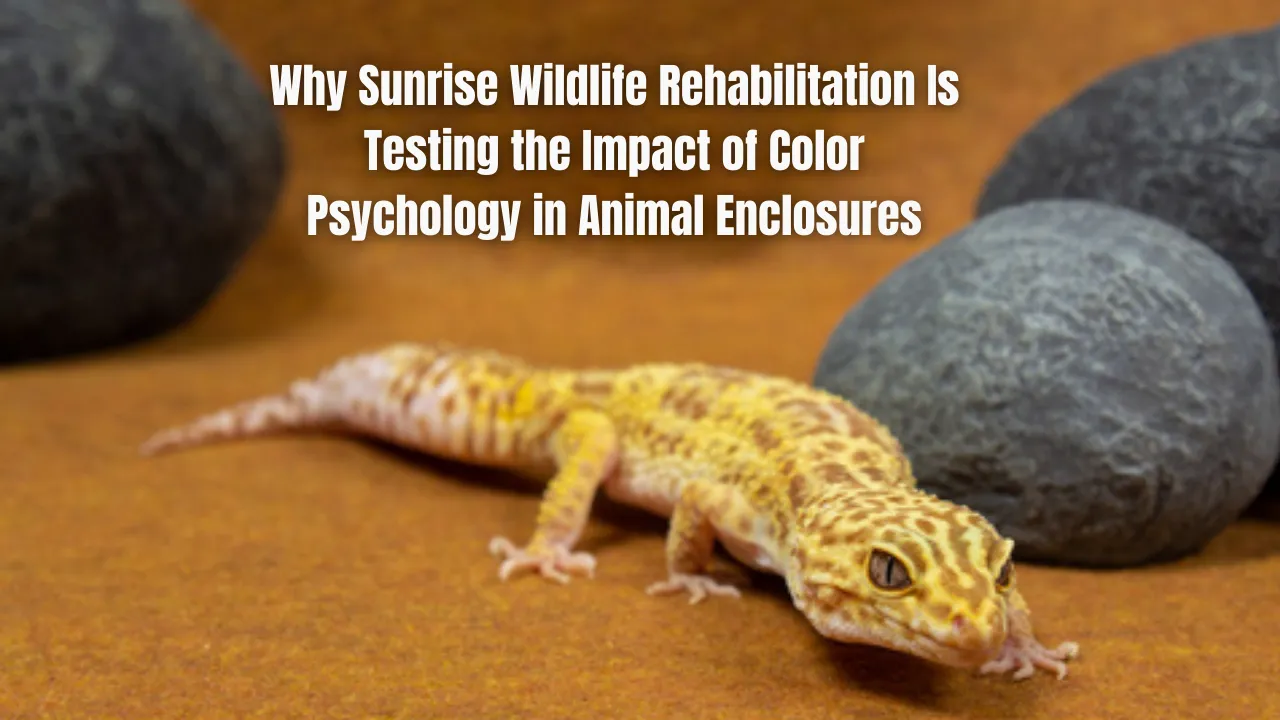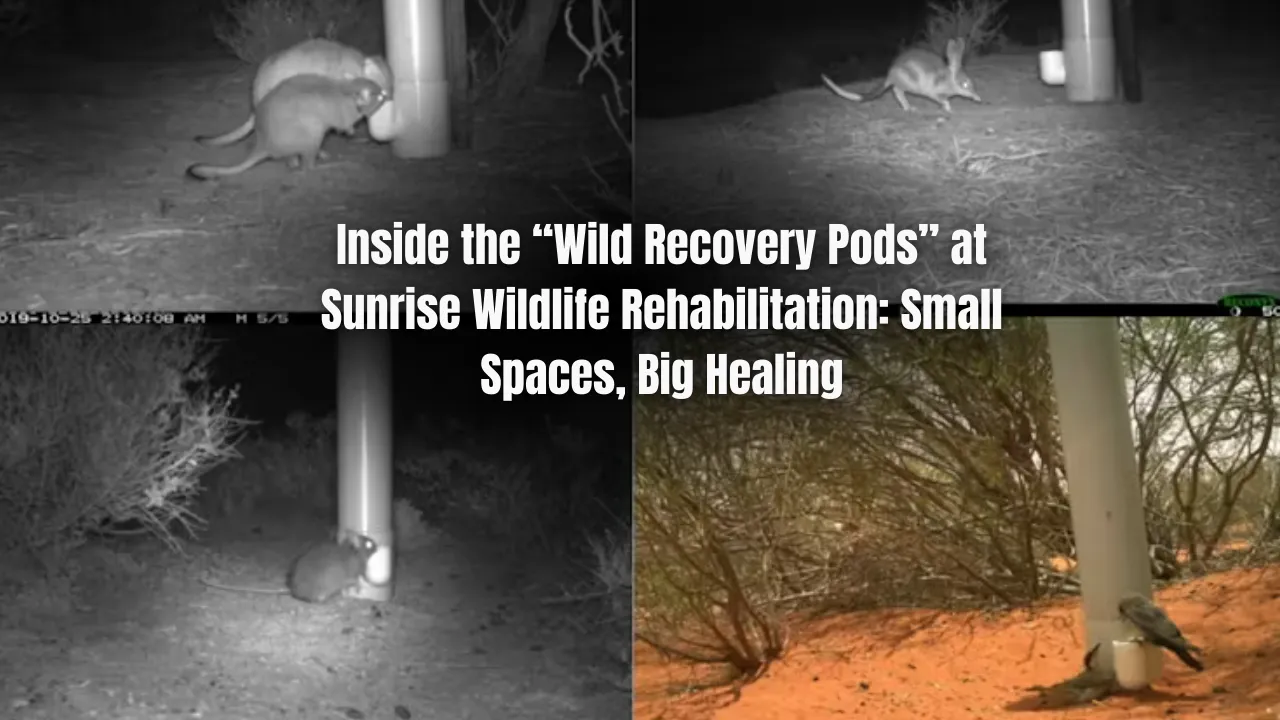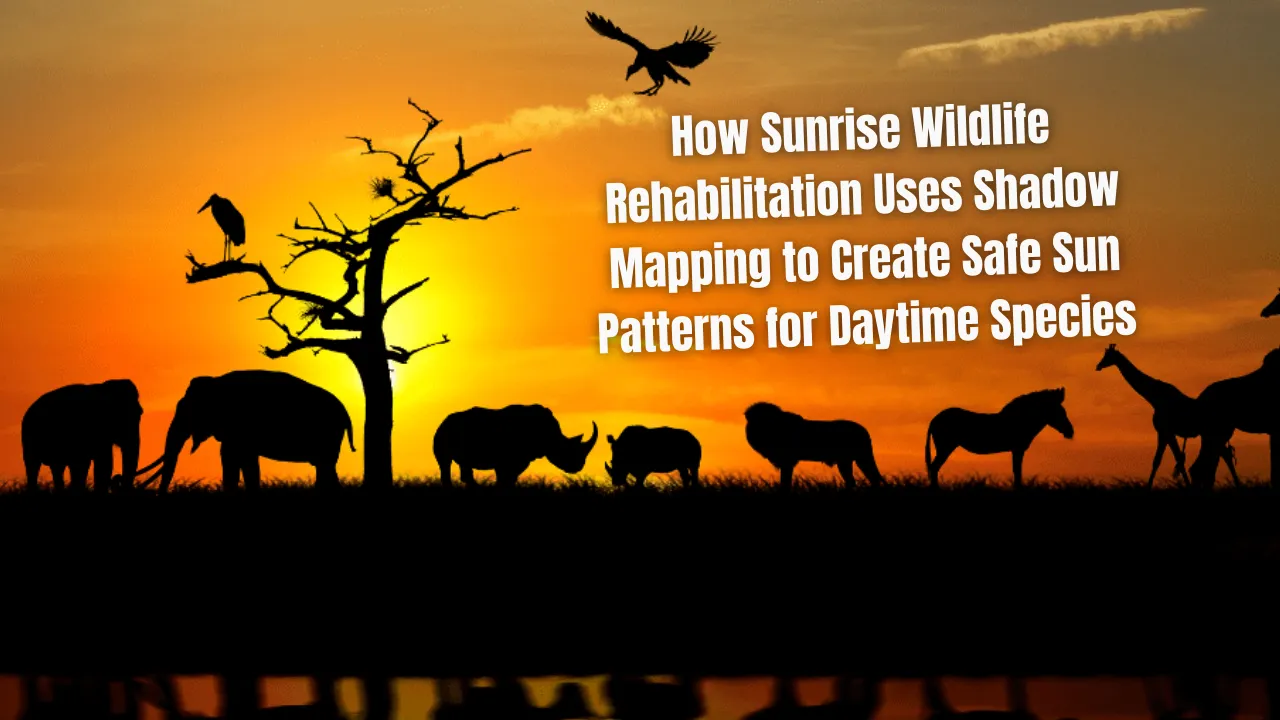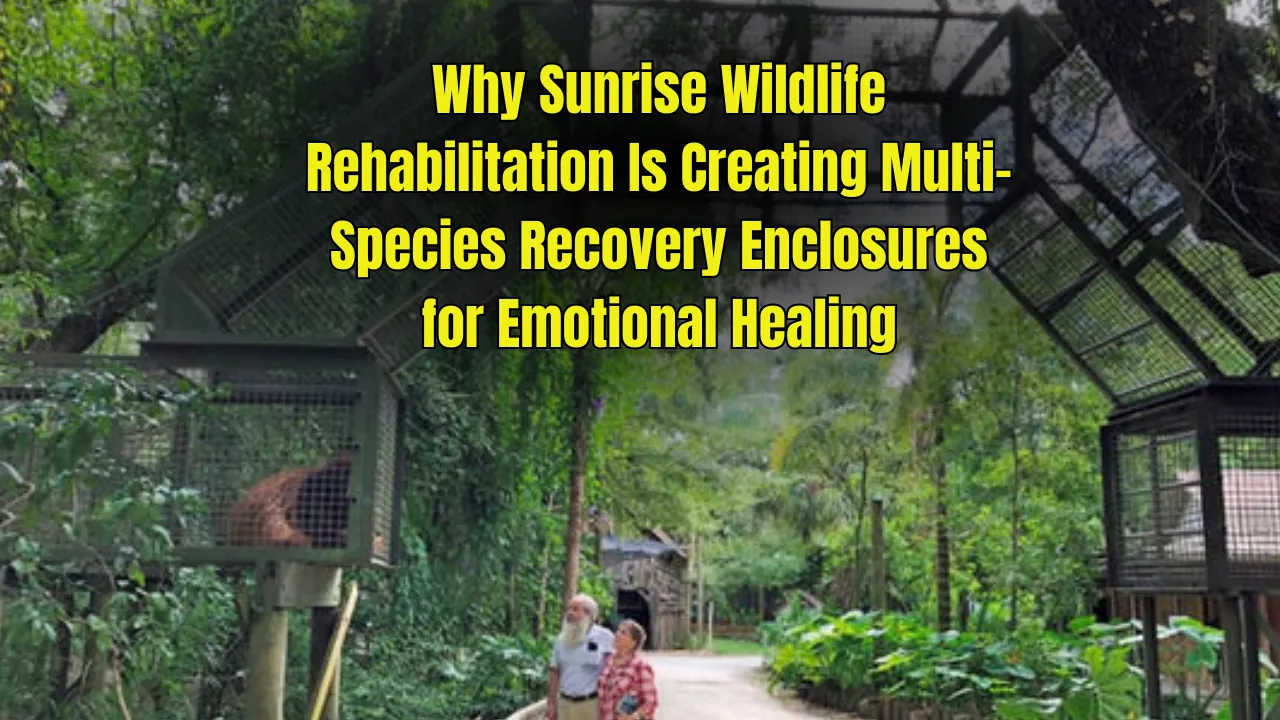Custom Wildlife Music Therapy is redefining how stress is managed in animal care. At Sunrise Wildlife Rehabilitation, this specialized practice supports the emotional and physical recovery of injured and traumatized wildlife. By using carefully designed sound environments tailored to specific species, the center provides a calming atmosphere that encourages healing and stability in rescued animals.
This article explores the methods and science behind Sunrise’s innovative music therapy program. You’ll discover how customized soundscapes are created for each animal group, why sound matters in rehabilitation, and how this technique supports better outcomes in wildlife recovery. Whether you’re an animal lover or involved in wildlife care, this unique approach offers valuable insight into stress reduction and emotional support for animals in need.
Custom Wildlife Music Therapy: A Unique Approach to Animal Stress Relief
At Sunrise Wildlife Rehabilitation, custom wildlife music therapy is more than just background sound—it’s an intentional, science-backed tool to ease trauma and encourage healing. This therapy focuses on using music and natural sounds that mirror the animal’s habitat, behavioral rhythms, and auditory preferences. Unlike generic audio, these soundtracks are tailored to the species, their current condition, and recovery stage. This targeted approach has been shown to lower stress responses, reduce pacing and aggression, and improve feeding and sleep cycles. Whether it’s rhythmic drumbeats mimicking a mother’s heartbeat for young mammals or the soft rustling of trees for forest birds, each composition plays a purpose. The center’s caregivers rely on this innovative technique daily as part of a holistic treatment program designed to heal not just the body, but the mind as well.
Overview Table: How Custom Wildlife Music Therapy Is Used at Sunrise
| Element | Description |
| Type of Animals Treated | Birds, mammals, fawns, raccoons, squirrels, and more |
| Music Customization | Species-specific, behavior-based, and recovery-focused |
| Sound Sources | Nature sounds, gentle melodies, rhythmic tones |
| Therapy Duration | 15–30 minutes per session, 2–3 times daily |
| Tools Used | Portable speakers, timers, sound zoning systems |
| Observational Feedback | Animal behavior changes, stress indicators, feeding/sleep patterns |
How Custom Wildlife Music Therapy Works
Sunrise doesn’t use off-the-shelf music. Instead, they compose or curate soundtracks specific to an animal’s natural habitat and behavior. This includes replicating forest sounds, distant rainfall, soft wind rustling, or the subtle rhythm of natural heartbeats. Caregivers monitor the response of each animal closely to determine what kind of music calms or stimulates them appropriately.
For example, nocturnal mammals receive deeper, slower tones during their rest cycles, while songbirds are comforted by ambient chirping and leaves rustling. These small details make a significant difference. Each therapy session is adjusted for the time of day, animal type, and progress in rehabilitation, making it a truly dynamic and adaptive stress relief tool.
Benefits of Custom Wildlife Music Therapy
The greatest benefit of this method is the reduction of visible and measurable stress. Animals brought into rehabilitation are often confused, frightened, or aggressive. Custom wildlife music therapy provides a stable audio environment that counteracts chaos and fear.
Regular sessions result in calmer behavior, fewer signs of distress such as excessive pacing or vocalization, and improved cooperation with caregivers. This is especially vital for animals that require medical procedures or hand-feeding. When animals are less reactive, they heal faster and require fewer sedatives or external interventions. Over time, the therapy also promotes better sleep cycles and more predictable behaviors—key factors in preparing animals for release back into the wild.
Scientific Basis Behind Music Therapy
The science behind music therapy in animals is becoming increasingly robust. Studies in both domestic and wild species show that certain frequencies and rhythms can influence brain chemistry, particularly reducing cortisol levels—the hormone linked to stress.
Sunrise incorporates this research into practice, aligning their therapeutic sessions with known responses from similar animal types. Species-specific sound therapy is based on the idea that animals, like humans, associate sound with safety or danger. By recreating the soundscape of an animal’s native environment, Sunrise helps their nervous systems feel secure enough to rest and recover. It’s a subtle, non-invasive way to guide the brain and body back into balance.
The Role of Caregivers and Observations
No therapy is effective without close monitoring. Caregivers at Sunrise are trained not just in veterinary basics but also in behavior observation. They track reactions such as posture changes, feeding interest, grooming behaviors, vocalizations, and eye movements.
When a new sound therapy is introduced, staff members take notes on how animals behave before, during, and after the session. If a deer fawn begins relaxing its limbs or a bird starts chirping again, these are positive signals. If an animal appears overstimulated or agitated, adjustments are made immediately. This constant observation ensures the music remains therapeutic, not disruptive.
Examples of Animals Benefiting from Music Therapy
- Songbirds with wing injuries often stay silent upon rescue. After a few sessions with forest-themed music, many begin vocalizing again, showing signs of emotional comfort.
- Fawns, especially those orphaned or found in urban zones, exhibit signs of panic. Gentle drum-like rhythms mimicking a heartbeat help them settle into safe, resting postures.
- Raccoons, known for their anxiety in captivity, are calmer and easier to care for when music resembling rain or nighttime sounds is played.
- Owls and hawks, typically wary and aggressive, show improved focus and less wing-flapping behavior when exposed to quiet ambient background tones.
Tools and Setup Used in the Therapy
The setup at Sunrise is both efficient and practical. Each enclosure is fitted with portable speakers that can be moved and adjusted for volume and direction. Caregivers use simple sound zoning techniques so that overlapping soundtracks don’t interfere with each other.
Playlists are rotated monthly and reviewed based on the animals currently in care. Volume levels are kept low to replicate natural conditions, and sessions are timed to align with feeding, grooming, or resting periods. This consistency supports the animal’s internal clock and helps create a rhythm that they can feel secure within.
Why Sunrise Wildlife Rehabilitation Stands Out
- They prioritize individualized therapy, designing sound environments that reflect each animal’s specific background and stress level.
- They blend research with intuition, using scientific understanding while listening to the animal’s feedback in real time.
This balance of care and innovation allows Sunrise to achieve impressive recovery rates, especially in sensitive or trauma-prone animals. Their use of custom wildlife music therapy is a model for other rehabilitation centers seeking gentle, non-invasive ways to support animal healing.
FAQs
What kind of animals benefit most from this therapy?
Any animal experiencing stress, especially birds, mammals, and fawns, can benefit. It’s especially useful for species prone to anxiety in captivity.
Is custom music better than playing generic nature sounds?
Yes, tailored soundtracks are more effective because they address the specific needs, frequencies, and behaviors of each species.
How do you know if the therapy is working?
Behavioral changes such as calm posture, better sleep, increased feeding, or reduced pacing are good indicators of success.
Can small shelters or home rehabilitators use this method?
Absolutely. With simple equipment like Bluetooth speakers and access to curated sounds, even small-scale operations can apply it effectively.
Does music therapy replace other forms of treatment?
No, it complements medical care and physical rehab by reducing stress, making animals more receptive to treatment.
Final Thought
At its core, custom wildlife music therapy is a testament to how deeply connected sound is to life and healing. Sunrise Wildlife Rehabilitation proves that listening—both to music and to animals—can lead to powerful outcomes. Their approach doesn’t rely on force or fear, but on rhythm, tone, and empathy.
If you care about innovative, compassionate wildlife care, take a closer look at how sound can soothe the wild. Share this article with others who love animals, and let’s start more conversations around healing with harmony. Want to discover more gentle care methods or explore how nature connects us all? Browse through our wildlife care guides or dive into our therapeutic animal insights today.
